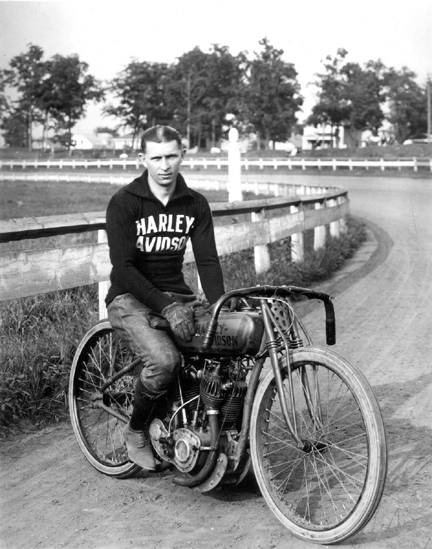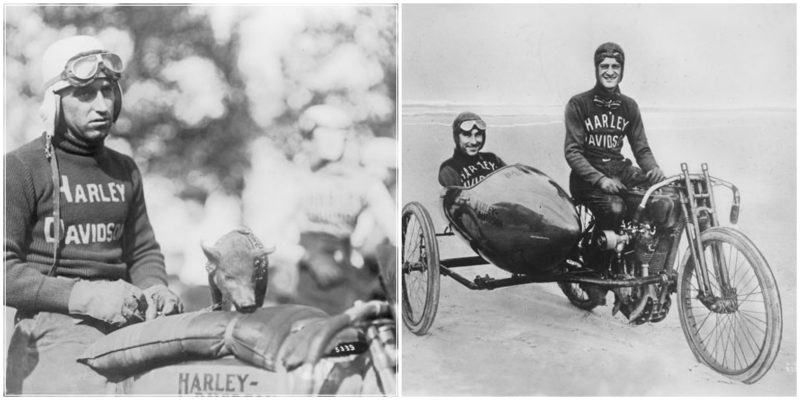By 1920, Harley-Davidson was the largest motorcycle manufacturer in the world, with 28,189 machines produced, and dealers in 67 countries.Beginning in 1920, a team of farm boys, including Ray Weishaar, who became known as the “hog boys”, consistently won races. The group had a live hog as their mascot. Following a win, they would put the hog on their Harley and take a victory lap. In 1983, the Motor Company formed a club for owners of its product taking advantage of the long-standing nickname by turning “hog” into the acronym HOG., for Harley Owners Group. Harley-Davidson attempted to trademark “hog”, but lost a case against an independent Harley-Davidson specialist, The Hog Farm of West Seneca, New York, in 1999 when the appellate panel ruled that “hog” had become a generic term for large motorcycles and was therefore unprotectable as a trademark.

Fred Ludlow
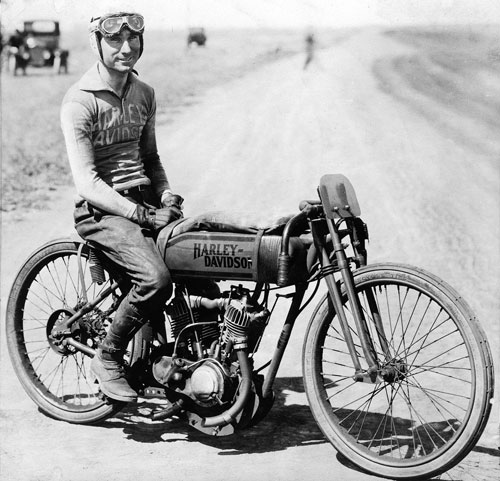
Fred Ludlow (Above) was working as a truck driver in order to fulfill his dream of motorcycle racing. Already with 16 years, he participated in the first race, was successful and in 1914 became a driver for “Indian”, driving the “Indian Bahnrennmaschine”.
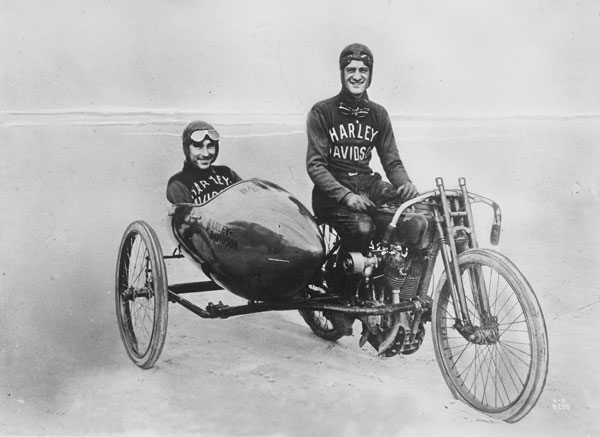
Among other things, the oval track of Playa del Rey circuit of Los Angeles was his application; In 1916 and 1917 he drove mainly long-distance races. In April 1918 he was recruited soldier in the First World War and for a “Signal-Corp” in Europe; in August 1919, he returned from Europe and was recruited by Harley-Davidson as a factory driver. He drove in the later becoming famous as the “Wrecking Crew” racing department of Harley-Davidson, “pulped” all the oval track racing and records, and was gathered in the famous “US-racers of the 1920s”, so among others Ralph Hepburn, Otto Walker, Red Parkhurst and Ray Weishaar. In 1998 he was recorded in the Hall of Fame of the AMA.
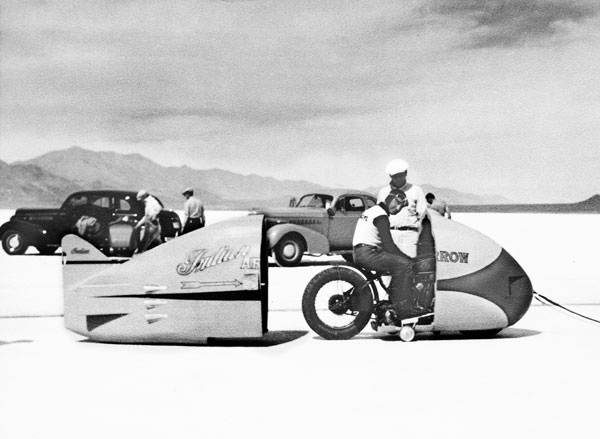
Ray Weishaar
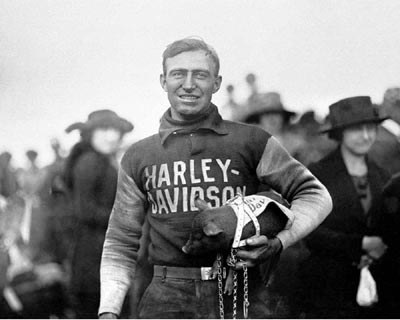
Lawrence Ray Weishaar was a Class A Racing Champion in the 1910s and 1920s. He rode for the Harley-Davidson ‘Wrecking Crew,’ and helped to popularize the nickname ‘hog’ in reference to Harley-Davidson by carrying the team’s mascot, a small pig, around on victory laps.
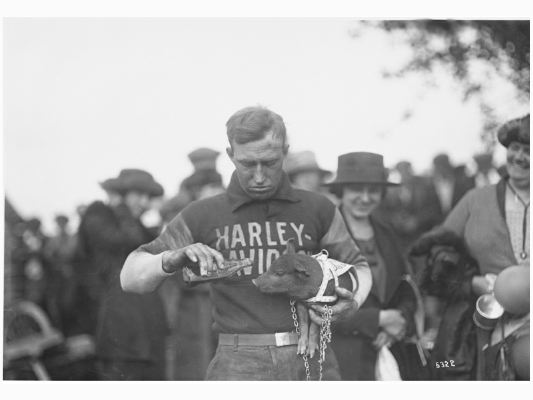
Weishaar began racing the half-mile circuits of various county fairs around Kansas between 1908 and 1910. He earned the nickname, “Kansas Cyclone,” and subsequently won the Kansas State Championship two years in a row. The second time around on the championship race, one of the handlebars on his motorcycle broke off, yet he still managed to win the race (but he did not break his previous record).
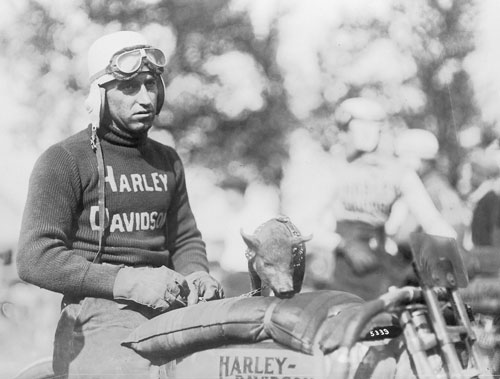
Weishaar was racing on the national circuit by 1914, with the national event in Savannah, Georgia being his first big race. He was forced to drop out of the race on the 24th lap when his gas tank began leaking; at the time he was vying for the first place position. In 1915, at the Dodge City 300, a malfunctioning spark plug caused him to lose, and he also lost a 300-mile race at the Chicago Speedway due to his helmet strap coming loose, but that same year he claimed a victory in a 100 mile race in Pratt, Kansas.The following article appeared in the September 1915 issue of The Harley-Davidson Dealer:
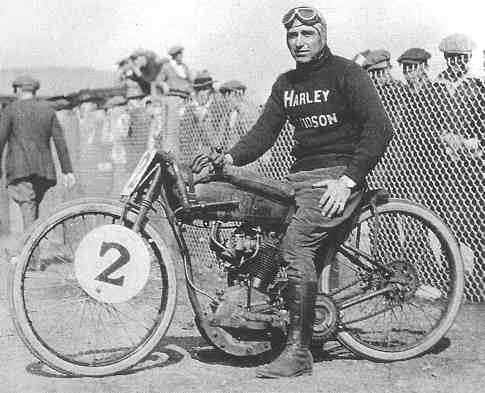
Albert “Shrimp” Burns
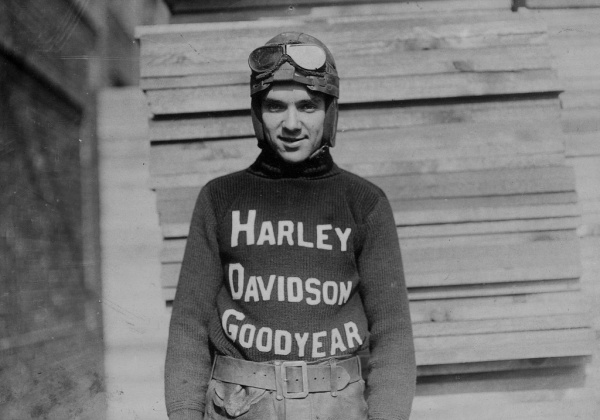
Albert “Shrimp” Burns was an American dirt and board track motorcycle racer in the early 20th century. Riding for Harley-Davidson and later Indian, he won multiple races in California and later the east coast and the midwest. He won the national championship in 1919, and was inducted in the AMA Motorcycle Hall of Fame in 1998.
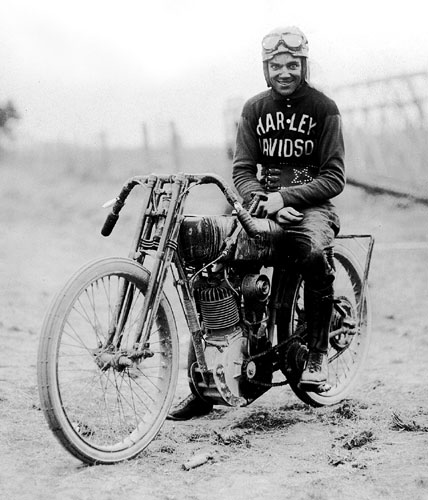
Burns’s first professional motorcycle race was in Sacramento on May 4, 1913. He finished fourth. Burns improved his racing skills through the summer of 1913 on the tracks of Northern California. The other racers didn’t like being upstaged by a 15-year-old riding inferior equipment, and for a time Burns was prevented from competing, but by the end of the season, Burns earned his first victory in San Jose.On July 4, 1915, Burns won three events at Pleasanton, California, including a 100-mile race.
Burns was noted for his toughness. In a Marysville, California race, Burns suffered a hard fall, but managed to put his machine back together in time for the next race and won the five-mile final. Later it was found that he had ridden with a fractured collarbone and broken shoulder.
After a temporary halt to his career due to World War I, early in 1919, Burns won one of the first major West Coast races after the war in Fresno, California. In June of that year the 20-year-old Burns signed his first factory contract, with Harley-Davidson
Jim Davis
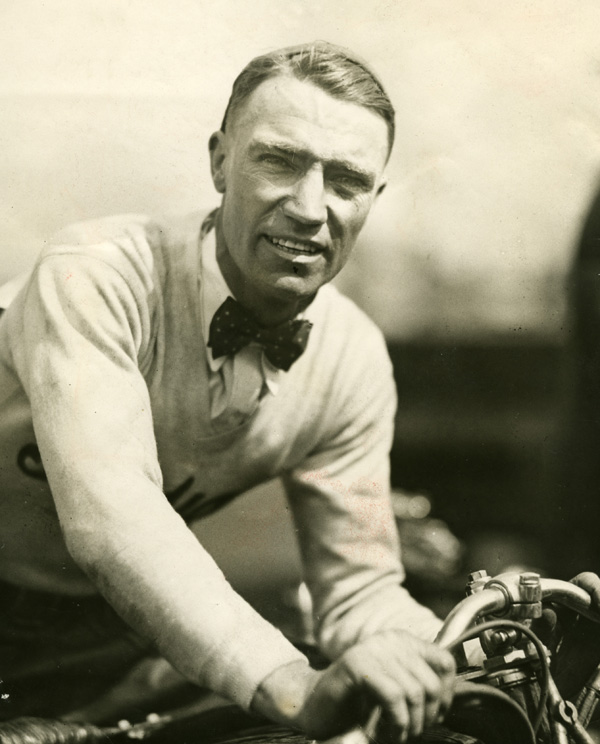
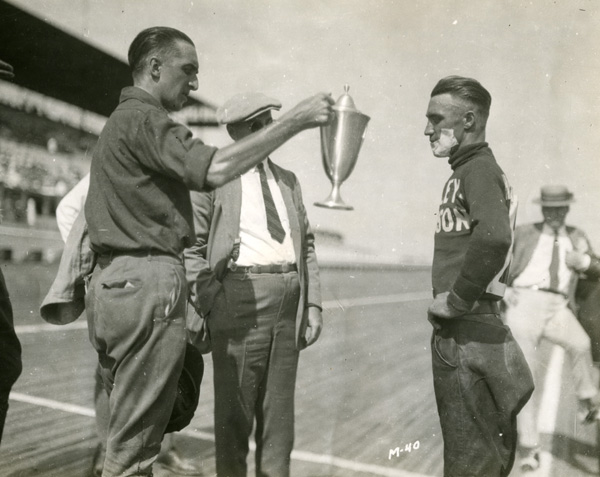
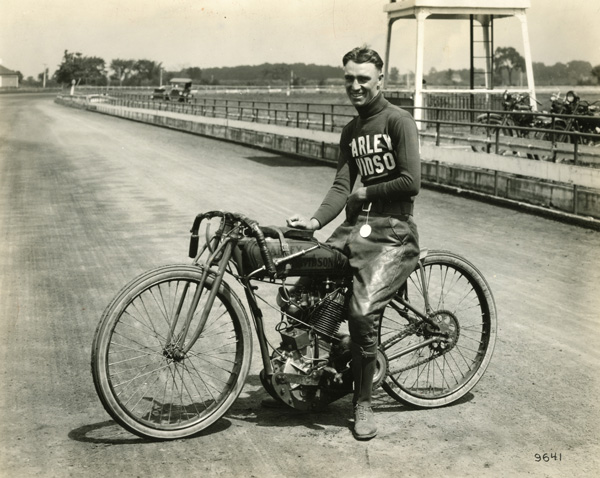
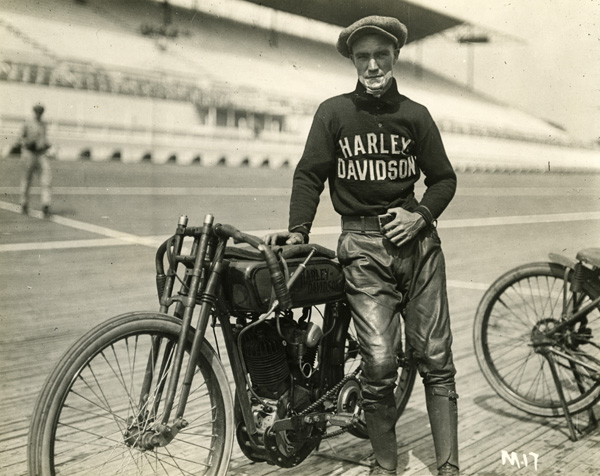
Ralph Hepburn
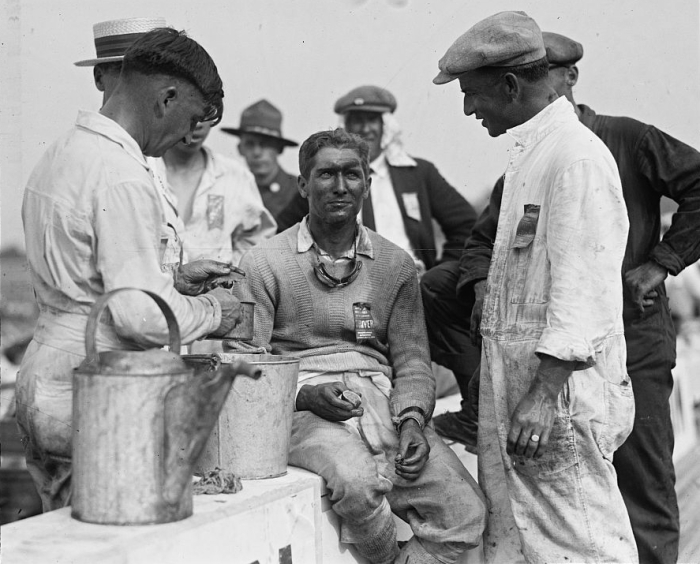
Ralph R. Hepburn was a pioneer American motorcycle racing champion and an Indianapolis 500 racecar driver.He began riding motorcycles as a teen and his skills led to him signing on with a cycle performing group in 1914 that toured the West Coast and parts of the American Midwest. He then began competing in on board tracks, then on dirt. His racing career was interrupted during 1917 and 1918 due to World War I.
In June 1919, Hepburn came to national prominence when he won the 200 mi (320 km) National Championship at Ascot Park in Los Angeles riding for the Harley-Davidson factory. He began winning consistently thereafter and in 1921 won the “Dodge City 300 National Championship” while breaking all existing 300 mi (480 km) records. In 1922 he dominated professional track racing for the Indian Motocycle company. That year, he rode to his second victory in the 300 mi (480 km) National Championship motorcycle race, this time at Meridian Speedway inWichita, Kansas.
At the end of the 1924 American racing season, and after competing in special events in Australia, Hepburn began his auto racing career.
